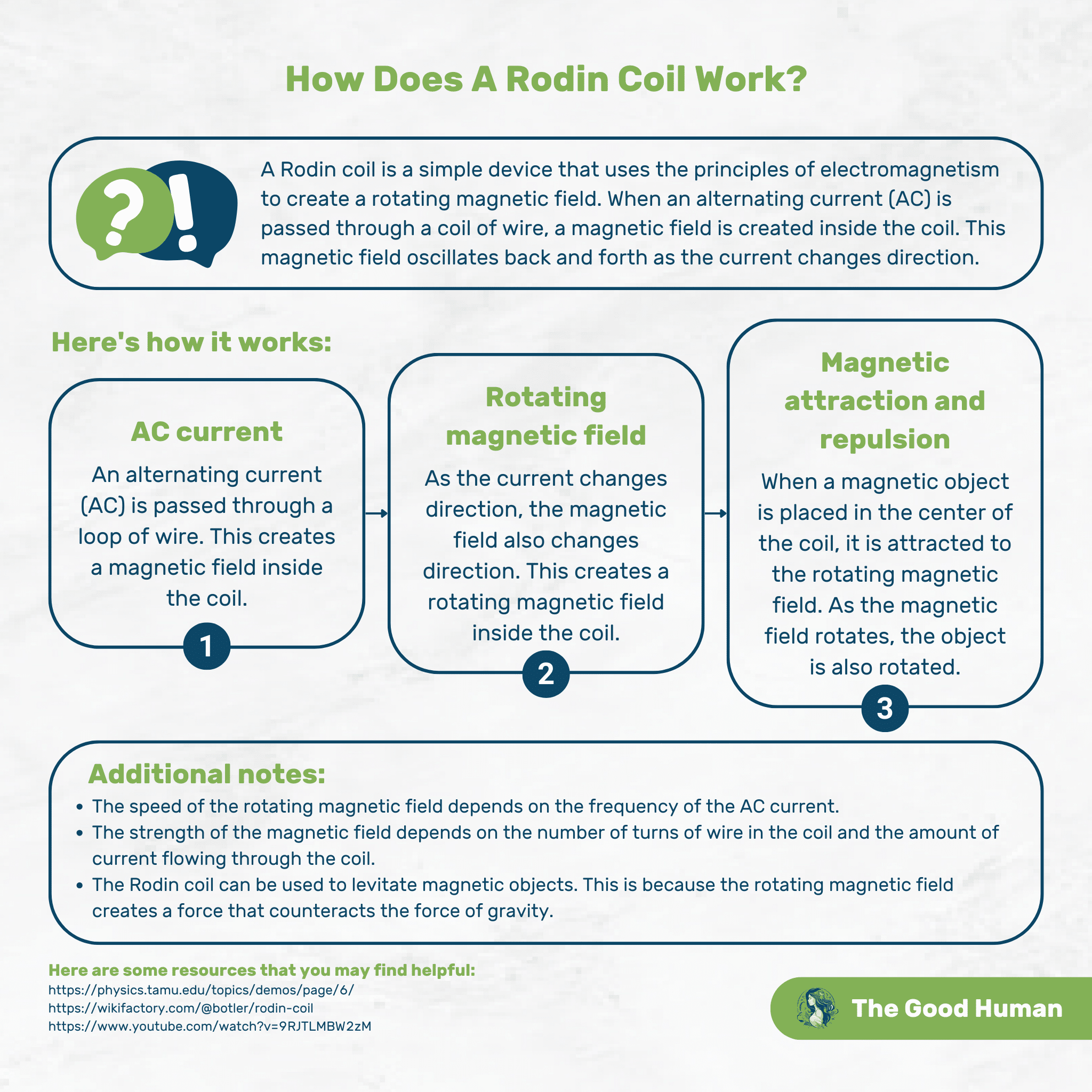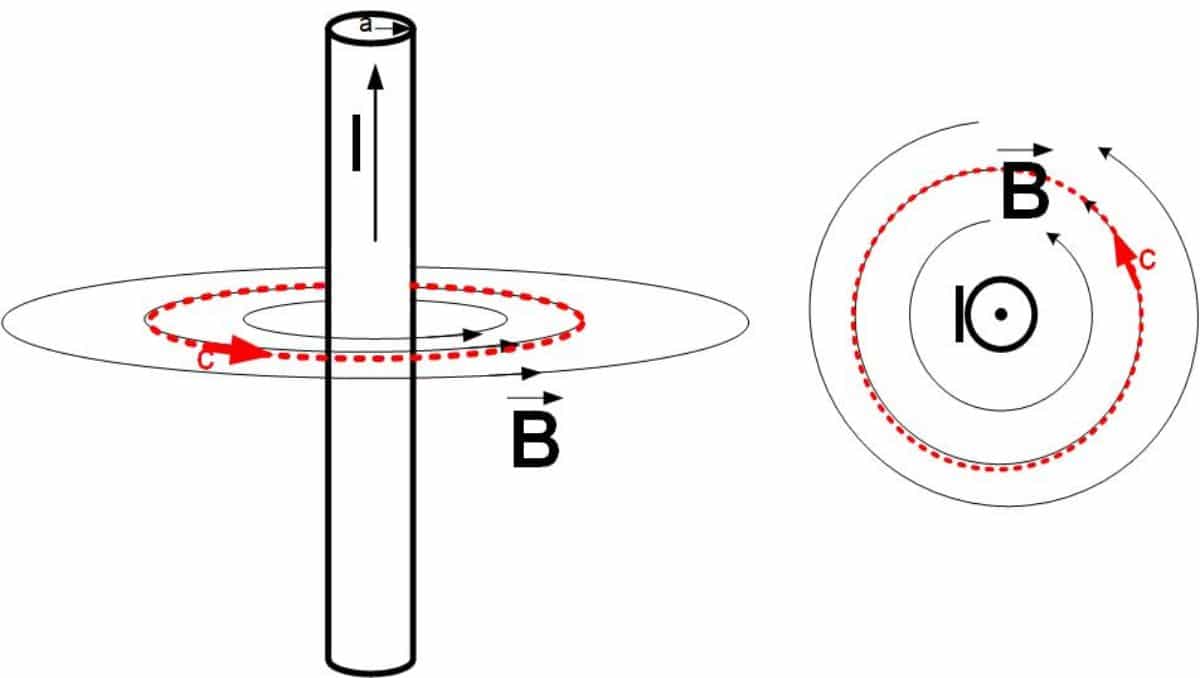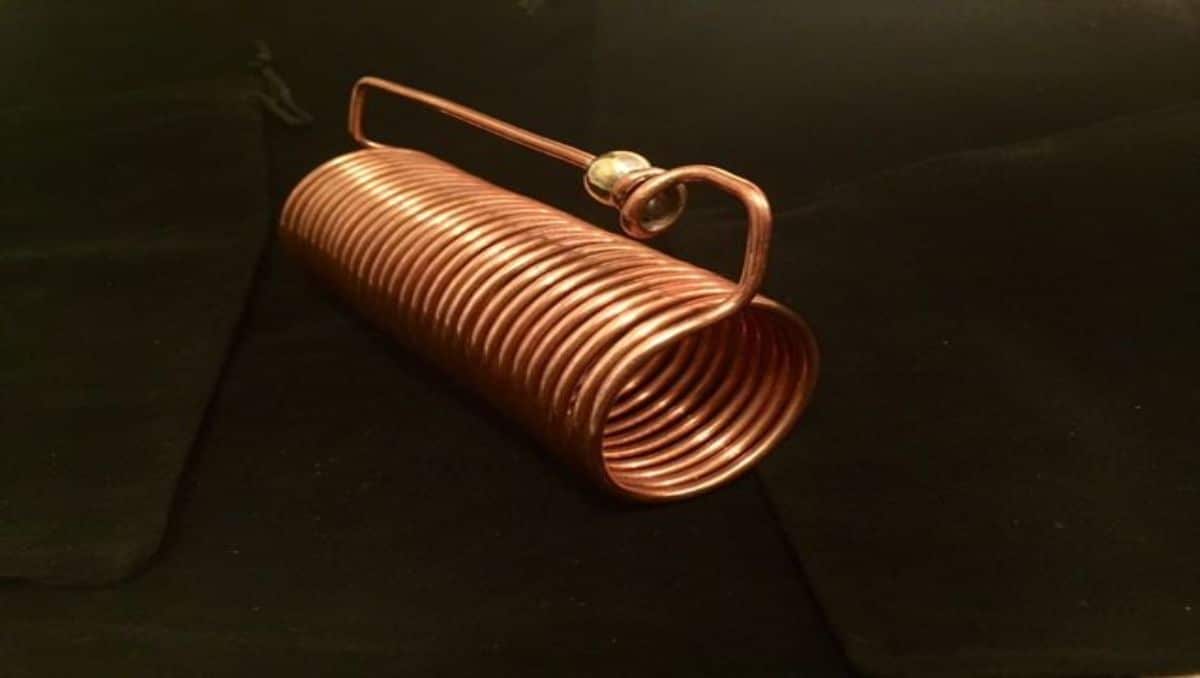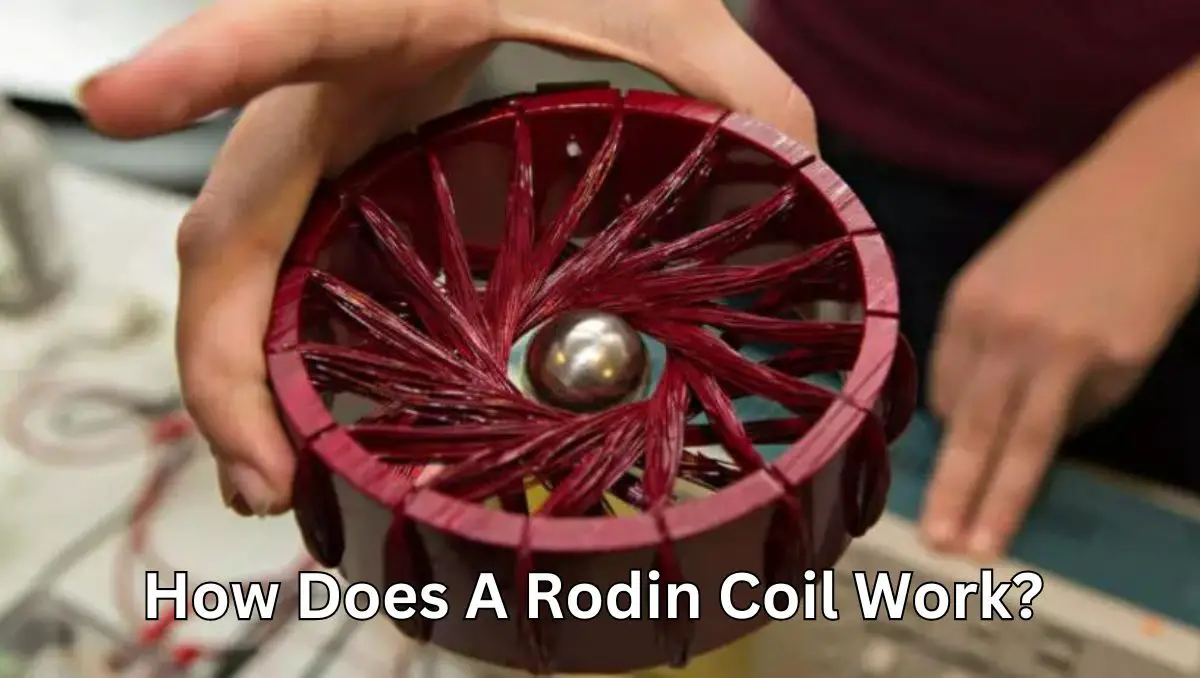In the world of electromagnetism, there exists a fascinating invention known as the Rodin Coil. The Rodin Coil is not your ordinary coil. It defies convention and challenges traditional notions of electromagnetism. It has the potential to revolutionize our understanding of energy transfer and power generation. But how exactly does it work?
A Rodin Coil works by utilizing a unique geometric configuration of wires based on the mathematical principles discovered by inventor Marco Rodin. Unlike traditional coils, the Rodin Coil taps into vortex mathematics, creating a toroidal energy flow.
In this article, let’s delve into the key concepts of electromagnetism, explore the equations that govern Rodin Coils, compare their benefits against traditional coils, and debunk common myths surrounding this intriguing technology.
Understanding the Rodin Coil

To understand how a Rodin coil works, it is important to first examine its historical context and development. Marko Rodin introduced the idea of the Rodin coil in the late 1990s as a potential method for producing free energy.
The basic design and construction of a Rodin coil involve winding wires in a specific pattern that creates a unique magnetic field. This magnetic field is said to have special properties, such as increased efficiency and reduced resistance, which allow for greater energy output.
The coil is typically made of copper wire, which provides excellent conductivity for electrical currents. Its unique design incorporates a series of interconnected loops that follow a specific pattern based on mathematical principles such as the Fibonacci sequence and sacred geometry.
These precise geometrical arrangements enable the coil to generate a powerful magnetic field, making it an essential component in various applications, such as energy generation and electromagnetic research.
The electrical properties of the wire play a crucial role in conducting current effectively, while the magnetic properties facilitate the creation of a strong magnetic field. Coil winding techniques are employed to achieve precise dimensions and maximize coil efficiency.
Using geometric principles, you can create a rodin coil that harnesses electromagnetic forces in remarkable ways. The design of the coil incorporates both quantum mechanics and classical physics to achieve optimal performance.
How Does A Rodin Coil Work?
Marko Rodin and Randy Powell devised an intriguing mathematics that is basically simple but has enormous repercussions. They refer to it as Vortex-based Mathematics because they have put out Rodin’s numerical system on the surface of a torus, demonstrating how energy in nature, or the universe, desires to flow freely, generating an energy vortex in the process.
The Rodin coil is a Vortex-based Mathematics application. The Rodin Coil is a toroidal, or doughnut-shaped, object twisted by wires in a pattern compatible with Marko Rodin’s numerical patterns.

The key to the Rodin coil’s functionality lies in its ability to manipulate the flow of electrons.
The coil’s geometric structure creates a toroidal magnetic field, which induces a self-sustaining current flow within itself. This continuous motion of electrons generates a powerful magnetic field that can attract or repel objects with astonishing force.
Additionally, this unique configuration allows for enhanced energy generation. The precise alignment and spacing of the wire windings enable efficient conversion between electrical and magnetic energy, making it an ideal device for various applications.
Key Concepts in Electromagnetism
In understanding the Rodin Coil and its functioning, it is crucial to grasp the concept of inductance and its role within this coil design. Comprehending magnetic fields and their manipulation is also essential as they rely on the controlled manipulation of these fields to achieve desired outcomes.
Inductance and its Role in Rodin Coils
Inductance refers to the ability of a conductor to store energy in a magnetic field. In Rodin Coils, inductance plays a pivotal role in enhancing the efficiency and effectiveness of electromagnetic processes.
Inductance harnesses electromagnetic principles to create sustainable technology with anti-gravity capabilities.
In classical physics, inductance refers to the ability of an electrical circuit or component to store energy in its magnetic field. In the case of a Rodin Coil, this property is harnessed and amplified to produce remarkable effects.
By carefully designing the coil’s geometry and utilizing multiple layers of wire, the inductance is maximized, resulting in enhanced magnetic fields and increased efficiency. This phenomenon allows for unique applications, such as levitation and propulsion systems that defy conventional limitations.
Magnetic Fields and Their Manipulation
In understanding how a Rodin coil works from a quantum mechanics perspective, one needs to delve into the world of subatomic particles and their behavior. The coil’s unique design creates a magnetic field that interacts with these particles in a way that amplifies their energy and movement.

From a quantum mechanics perspective, the mind-bending principles at play in a rodin coil will leave you awe-struck. Quantum interference and wave-particle duality explain how the coil’s electromagnetic field can simultaneously act as both a particle and a wave.
Energy quantization ensures that only specific energy levels are allowed, leading to unique properties. By harnessing quantum superposition and entanglement, the rodin coil manipulates magnetic fields in unprecedented ways, promising endless possibilities for scientific exploration.
On the other hand, from a classical physics explanation, the coil’s geometry and winding pattern play crucial roles in creating an electromagnetic field with specific properties, allowing for efficient energy transfer and manipulation.
Contrary to the mind-bending principles of quantum mechanics, a classical physics explanation for the workings of the rodin coil emerges, offering a more tangible understanding. By manipulating magnetic fields through carefully constructed coils, the rodin coil can generate unique electromagnetic effects.
Both perspectives offer valuable insights into the functioning of this intriguing device.
Equations Governing Rodin Coils
One fascinating aspect of Rodin coils is how their behavior can be mathematically described through a set of equations. These equations govern the coil behavior and provide insight into the complex interactions between magnetic fields and electromagnetic principles.
By understanding these equations, we can gain a deeper understanding of how Rodin coils work and harness their unique properties.

Ampere’s Law: The first equation that governs the behavior of Rodin coils is known as Ampere’s law. This equation relates the magnetic field produced by a current-carrying wire to the current flowing through it. It helps us understand how the magnetic field created by the coil affects its surroundings.
Faraday’s Law: Another important equation is Faraday’s law, which describes how changing magnetic fields induce an electromotive force (EMF) in a nearby conductor. This explains how Rodin coils can generate electricity or transfer energy efficiently.
Ohm’s Law: Additionally, Ohm’s law plays a role in understanding Rodin coils. It relates voltage, current, and resistance in an electrical circuit. By applying this law to Rodin coil systems, we can analyze their energy efficiency and optimize their performance.
These equations provide valuable insights into the behavior of Rodin coils and help us understand their unique properties. By studying them, we can design more efficient systems and unlock new applications for this innovative technology.
Benefits of Rodin Coils vs Traditional Coils
| Feature | Rodin Coil | Traditional Coil |
|---|---|---|
| Geometry | Unique toroidal design with a special spiral pattern. | Conventional cylindrical or solenoidal shape. |
| Inductance | May exhibit higher inductance. | Typically lower inductance. |
| Resistance | Lower resistance due to the spiral winding. | Higher resistance, especially in long coils. |
| Frequency Response | Potential for improved frequency response. | Standard frequency response. |
| Energy Efficiency | Claims of higher energy efficiency and reduced losses. | Efficiency may vary based on design and material. |
| Electromagnetic Field | May produce a unique toroidal electromagnetic field. | Produces a standard electromagnetic field. |
| Size and Weight | Can be compact and lightweight. | Size and weight may vary based on design and purpose. |
| Applications | Some claim benefits in energy generation, transmission, and healing applications. | Widely used in various electronic devices, power systems, and electromagnets. |
| Complexity | More complex design and understanding. | Well-established and understood technology. |
| Cost | Can be more expensive due to unique design. | Generally more cost-effective. |
When comparing Rodin Coils to traditional coils, there are several key benefits to consider. Firstly, Rodin Coils offer a higher efficiency in energy generation due to their unique design and mathematical principles.
Additionally, these coils have the potential for increased power output and improved electromagnetic field control compared to traditional coils.
Comparison With Traditional Coils
The rodin coil’s primary advantage lies in its ability to enhance inductive charging through magnetic resonance. It enables efficient energy transfer over short distances, making it ideal for wireless power applications.
Unlike traditional coils that rely solely on electromagnetic induction, the Rodin coil employs a complex geometry that maximizes magnetic field concentration and minimizes losses. This design allows for improved efficiency and reduced heat generation during energy transfer.

Additionally, the Rodin coil offers better control over power transmission, enabling more precise and targeted delivery of electricity.
Applications in Energy Generation
In discussing the applications of a Rodin coil in energy generation, it is essential to understand the concepts of free energy and its implications for sustainable technology.
The Rodin coil is a unique type of coil that exhibits special mathematical properties based on vortex mathematics. By harnessing these properties, it has the potential to revolutionize energy generation by providing an efficient and sustainable source of power.
The Rodin coil is a sustainable technology that has sparked interest in the possibility of free energy generation. Contrary to popular belief, it does not violate the laws of thermodynamics or create perpetual motion machines. Instead, it utilizes unity efficiency to maximize energy output.
With its over unity efficiency, the Rodin coil also holds tremendous promise for energy generation applications. It is believed that it may possess advanced healing abilities, making it even more intriguing for future advancements in sustainable technology.
Debunking Common Myths
While the allure of revolutionary technologies is compelling, it is crucial to approach claims about Rodin Coils with a critical mindset. Scientific evidence and established principles consistently debunk the common myths associated with these devices.
It is essential to rely on rigorous scientific scrutiny and peer-reviewed research when evaluating the capabilities and limitations of any purported groundbreaking technology.
Here’s a table debunking common myths of a Rodin Coil:
| Myth | Description | Fact Check |
|---|---|---|
| Free energy generation | Claims that a Rodin Coil can generate unlimited free energy. | The concept of perpetual motion violates the laws of thermodynamics. |
| Over-unity efficiency | Suggests that a Rodin Coil has efficiency greater than 100%, violating energy conservation principles. | No device can operate with over-unity efficiency without violating established physical laws. |
| Revolutionary electromagnetic properties | Claims that Rodin Coils possess unprecedented and unexplained electromagnetic properties. | Rodin Coils operate based on established electromagnetic principles, and there is no evidence of revolutionary properties. |
| Advanced healing abilities | Proposes that exposure to a Rodin Coil can lead to advanced healing. | There is insufficient scientific evidence to support claims of Rodin Coils having advanced healing abilities. |
| Anti-gravity capabilities | Suggests that a Rodin Coil can defy gravity or produce anti-gravity effects. | There is no credible scientific evidence supporting the idea that Rodin Coils can manipulate gravity. |
The Final Spin: Unraveling the Science Behind Rodin Coils
In conclusion, the Rodin Coil is a fascinating invention that harnesses the power of electromagnetism in a unique and efficient way. By utilizing its intricate design and the principles of electromagnetic fields, this coil produces powerful magnetic fields that can be used for various applications.
Its ability to generate high energy with minimal power input makes it an innovative solution for many industries. Despite common misconceptions, the Rodin Coil isn’t magic; it simply demonstrates the beauty and complexity of scientific principles at work.







